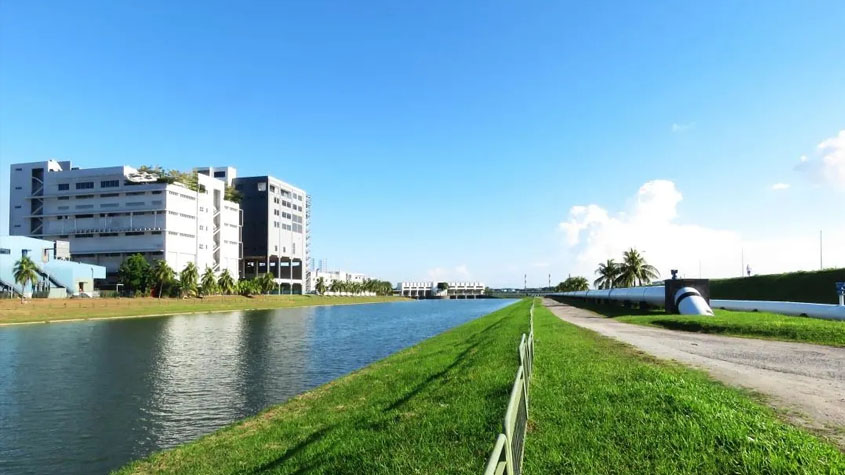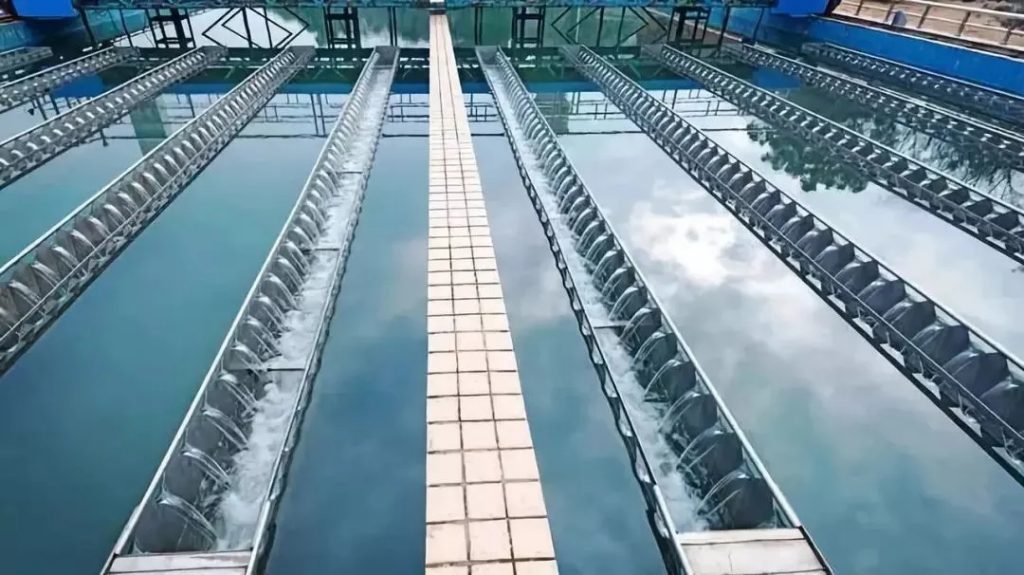
As the second water source of cities, reclaimed water not only reduces environmental pollution, but also effectively increases water resources. It is of great significance to the development of cities. Many countries and cities have taken the utilization of reclaimed water into strategic consideration. Reclaimed water is generally used for greening irrigation, domestic water, groundwater recharge or industrial water, and some areas also use reclaimed water as drinking water or indirect drinking water. Faced with the growing demand for research, practice and development of reclaimed water drinking around the world, the World Health Organization (WHO) first released Reclaimed Water for Drinking: Guidelines for the Production of Safe Drinking Water in August 2017, aiming at developing reclaimed water drinking plans, Provide technical guidance for design, operation, management and system evaluation, and gradually guide and standardize the extensive, in-depth and sustainable development of reclaimed water for drinking. Reclaimed water management will be a big strategy for the world.
The Development of Utilization of Reclaimed Water in America
The United States is one of the earliest and most developed countries in the world to recycle sewage. The earliest reclaimed water drinking was the indirect drinking case of Montebello Forebay, California, USA in 1962. At present, indirect drinking water accounts for about 15% of the total utilization of recycled water, and direct drinking water accounts for about 0.2%. The main treatment process used is “reverse osmosis-advanced oxidation (RO-AOP)” or “ozone + biological activated carbon (O3-BAC)” route. Los Angeles plans to achieve 100% recycling of sewage by 2035. The four major sewage treatment plants in Los Angeles, Hyperion, Glendale, Tillman and Terminal Island, provide recycled water accounting for 2% of the city’s water consumption. The Hyperion Sewage Plant, located west of Los Angeles International Airport, is the largest sewage treatment plant in Los Angeles, currently receiving about 81% of the city’s urban sewage, with a recycling rate of 27%. Los Angeles plans to increase Hyperion’s wastewater recycling rate to 100 percent, bringing the city’s recycled water supply rate to 35%.

The Development of Reclaimed Water in Singapore
Singapore’s total domestic water resources are 600 million cubic meters, and the per capita water resources are only 211 cubic meters, ranking second to last in the world and the country with the most scarce water resources in the world. At present, Singapore’s water demand is about 1.93 million cubic meters per day, of which residential water accounts for 45% and industrial and other water use accounts for 55%. The per capita comprehensive water consumption is 350 liters/(person∙day), and the per capita domestic water consumption of residents is 143 liters/(person∙day). According to the relevant planning of Singapore, by 2060, the total water demand in Singapore will double, of which 30% is used for domestic use, and 70% is used for other industries. ∙ days). Faced with the serious scarcity of water resources and the growing demand for water, the Singapore government proposed the development of four “national water pipes” plans, namely rainwater harvesting (storage), imported water, NEWater and desalinated seawater. At present, the scale of new water and desalinated water treatment has reached 1.3 million cubic meters per day. In the future, it is planned that by 2060 (one year before the expiry of the water supply agreement with Malaysia), Singapore will be fully self-sufficient in water resources. 80% of resource demand, of which NEWater accounts for 55%. NEWater is produced using a rigorous three-step purification process, including ultrafiltration/microfiltration, reverse osmosis (RO) and ultraviolet (UV) disinfection.
Since the launch of the NEWater project, Singapore has successively built a number of NEWater water plants, including five water plants in Bedok, Kranji, Ulu Pandan and Changi Phase I and II. The total output of the new water plant exceeds 700,000 cubic meters per day, which can meet 40% of the water demand. It is planned to increase the production capacity to 60% of the water demand in 2060. The total output of existing and upcoming desalination plants in Singapore has reached 860,000 cubic meters per day, including 5 water plants including Daquan, Xinquan, Tuas, Binhai East and Jurong Island. Changi New Water Plant No. 2 is the NEWater water plant with the largest capacity in Singapore. It was developed and constructed by China Beijing Enterprises Water Group and was put into operation in November 2016. The capacity is 22.8 × 104 cubic meters per day, and the total system recovery rate can reach over 75%. The raw water is the effluent of Changi Wastewater Treatment Plant, which is treated to produce new water, which supplies industrial water and tap water for Singapore.
Development of Reclaimed Water in Japan
The 20 reclaimed water centers managed by the Tokyo Metropolitan Government process about 5.5 million cubic meters of sewage every day, and supply 10,000 cubic meters of reclaimed water to 188 facilities in 7 regions for use as toilet water and cooling water in buildings. The Bureau of Sewerage of Japan takes full advantage of the temperature difference characteristic of “cold in summer and warm in winter”, and uses 13 reclaimed water centers as heat sources for cooling and heating, and also uses them as heat sources for cooling and heating in 3 areas. In order to save the land area and use the land effectively, measures such as dividing the sedimentation tank into two layers and deepening the reaction tank were adopted. In addition, the reclaimed water center cooperates with the district government and city government to build a park or science museum on the roof of the covered facility and open it to the public. The Morisaki Water Reclamation Center in Tokyo, Japan is the largest water recycling center in Japan. Part of the treated water is discharged into Tokyo Bay, and the other part is used as cleaning and cooling water for equipment in the center, as well as water for toilets, and is also supplied to the Daejeon Cleaning Plant after being filtered by sand.
The Development of Utilization of Reclaimed Water in China
At present, the utilization rate of reclaimed water in my country is about 13%, and the productivity of reclaimed water facilities and equipment is still low, which needs to be developed urgently. At the beginning of this year, ten ministries and commissions including the National Development and Reform Commission, the Ministry of Ecology and Environment, the Ministry of Science and Technology, and the Ministry of Industry and Information Technology jointly issued the “Guiding Opinions on Promoting the Resource Utilization of Sewage Water“, which clearly calls for the promotion of high-quality development of sewage resource utilization in my country. By 2025 In 2018, the utilization rate of reclaimed water in water-deficient cities at the prefecture level and above reached more than 25%, and the Beijing-Tianjin-Hebei region reached more than 35%. It is estimated that the utilization rate of reclaimed water in my country will reach more than 40% in 2035.
AQUATECH CHINA 2022, looking forward to the pattern of recycled water in 2022
As a super large-scale water treatment display platform in the world, AQUATECH CHINA 2022 will be opened at the NECC (Shanghai) from June 8 to 10, 2022. There will be more than 40,000 exhibits on site to display the cutting-edge technologies of the utilization of renewable water resources at home and abroad. In addition, the cutting-edge technologies and products demonstrated spanned the three major fields of municipal, civil and industrial, including: environmental protection water treatment, membrane and related products, membrane complete equipment, filtration and separation, comprehensive water environment management, purification/drinking equipment, comfort system, Intelligent IoT, instrumentation and other major equipment and related supporting components provide the audience with complete environmental protection technology and service solutions for the entire industrial chain of the water industry.
Abuot Jiangsu Peier membrane
Jiangsu Peier membrane corp.,Ltd(Stock Code: 836744) was established in 2007 with a registered capital of 48 million Yuan, referred to as “Peier membrane industry”.
It is a high-tech enterprise focusing on the R&D, production, manufacturing and service of MBR flat sheet membrane products. Its Peier Product category as below:
- Flat Sheet Membrane Element
- Flat Sheet Membrane Element-Single Nozzle
- Flat Sheet Membrane Element-Double Nozzle
- Flat Sheet Membrane Element-3D Soft Support
- Flat Sheet Membrane Element-Renovated Membrane
- Flat Sheet Membrane Module
- Flat Sheet Membrane Module-Module-Single Nozzle
- Flat Sheet Membrane Module-Module-Double Nozzle
- Flat Sheet Membrane Module-2S(Double Deck)
- Flat Sheet Membrane Module-3S(High Flux)
- Flat Sheet Membrane Module-Mini Module
- MBR System
- MBR System-Laboratory Test Equipment
- MBR System-Pilot Equipment
- MBR System-Package System
Peier membrane always adheres to R&D and cooperation with well-known universities at home and abroad, such as Tsinghua University, Sydney University, Nanjing University of technology, Changzhou University and Jiangnan University.
It is the editor in chief of the national industry standard HY/T252-2018 “submerged flat membrane element for water treatment”.
At present, it has 6 invention patents, 46 new utility patents, 1 appearance patent and 4 software works.



